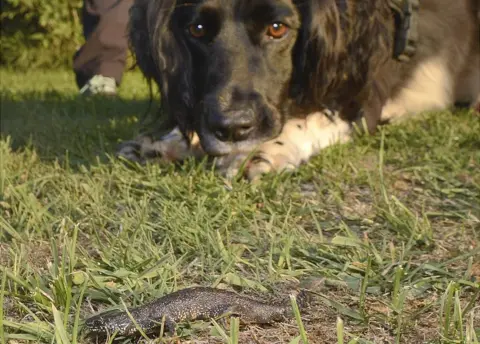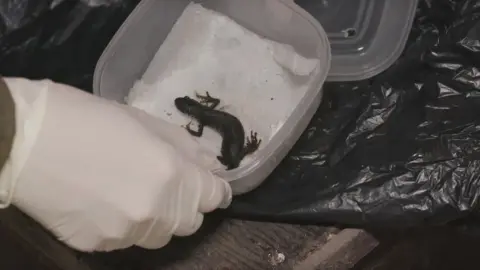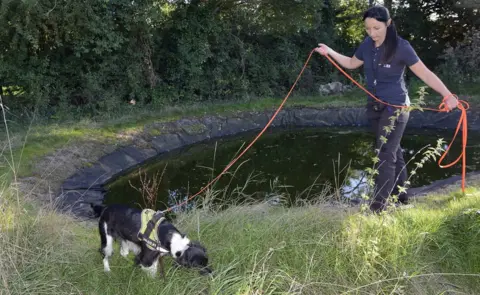Dog sniffs out newts for Wessex Water
 Nick Upton/Wessex Water
Nick Upton/Wessex Water A dog has been trained up and employed by a utility company to sniff out newts.
Springer spaniel named Freya has been taught to lie down when it detects a great crested newt for Wessex Water.
Under UK and European legislation, it is an offence to damage or destroy the newts environment without a licence.
Ecologist Nikki Glover, said the Wessex Water region is a "stronghold for great crested newts" and the dog will be a "massive benefit" to the company.
The three-year-old spaniel has been taught to sniff-out the nocturnal amphibians over the past year.
Using four newts under licence from Natural England, the dog's finely tuned nose has been trained to spot the newts hidden in plastic pots in long grass.
 Nick Upton/Wessex Water
Nick Upton/Wessex Water  Nick Upton/Wessex Water
Nick Upton/Wessex Water Wessex Water covers Wiltshire, Somerset, Bristol and Dorset.
Ms Glover, who owns and trained Freya, said if the company works within 250m (820ft) of a newt breeding pond it has to apply for a licence from Natural England.
"We would then be required to fence off the construction area and carry out pitfall trapping [buckets sunk into the ground], which could take around 30 days to complete," she said.
"Having a great crested newt detection dog is a massive benefit because they can find the newts more efficiently and effectively."

You may also like:

Louise Wilson, from Conservation K9 Consultancy who helped with the training, said the pair had been "absolute stars".
"You can see how much Freya enjoys her work and the bond she has with Nikki is absolutely vital," she said.

Great Crested Newts
- Are the biggest newt species in the UK and have been around for approximately 40 million years
- During the breeding season males develop a jagged crest which has a break at the base of the tail and females take on a "bulky" appearance
- Adults grow up to 15cm (6in) in length
- Their skin is black or dark brown with a rough, warty appearance and their underside is bright orange with irregular black blotches
- Populations have disappeared from many sites across Europe due to habitat loss and intensification of farming practices
Source: Froglife

